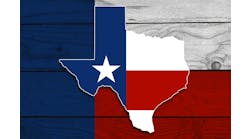The first decade of the 21st century has been one of slow growth for education institutions, and that is reflected in the enrollment numbers of the nation's 100 largest school districts.
The combined enrollment of those districts grew nearly 21 percent from 1990-91 to 2000-01; from 2000-01 to 2010-11, the student population in those districts' grew only 4.8 percent.
The ASU 100 list of the U.S. public school systems with the most students shows that 2010-11 was not too different from 2009-10. Only one district in 2010-11 was not on the list in 2009-10 — Seattle, which moved up from 102nd to 99th.
VIEW THE DATA NOW!
• Largest Enrollment (2010-11)
• 1-Year % Change in Enrollment (2010-11 vs. 2009-10)
• 10-Year % Change in Enrollment (2010-11 vs. 2000-01)
• 20-Year % Change in Enrollment (2010-11 vs. 1990-91)
• 2009-10 Per-Pupil Expenditure (PPE)
One-year changes for most of the 100 districts were slight; 44 of the 100 districts experienced changes of less than 1 percent — 21 had enrollment losses of less than 1 percent, and 23 had growth of less than 1 percent; 25 districts showed growth between 1 and 2 percent; nine districts showed an enrollment drop of between 1 and 2 percent.
Dropping off the 2010-11 list is the Cleveland school system. Enrollment there declined more than 7 percent in 2010-11 to 44,974, and it ranked 108th.
Overall, 67 of the 100 largest districts reported some enrollment growth in 2010-11, and 33 reported fewer students.
In higher education, the list of the institutions with the most students continues to show the popularity of online schools that don't have physical space restrictions to limit their enrollments. The largest enrollment in fall 2010 was the University of Phoenix online campus; its 307,965 enrollment was four times larger than any other institution.
The worst enrollment decline among K-12 systems was in the Detroit district, where students have been lured away by charter schools or by suburban districts that accept city residents as students. It reported 74,365 students in 2010-11, a drop of more than 17 percent compared with 90,499 in 2009-10.
Experiencing a rebound in the 2010-11 numbers was the Clark County (Nev.) district. The economic collapse in 2008 hit the Las Vegas area hard and ended what had been many years of steady enrollment growth that pushed the school system past 300,000 students. In 2009-10, Clark County reported an enrollment loss of more than 5,000 students.
But the preliminary figures from the National Center for Education Statistics database show that in 2010-11, the district added 7,000 students, climbing from 307,059 to 314,059.

